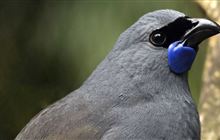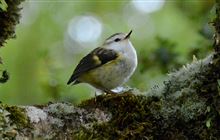Recovery of native birds in the Landsborough Valley
Introduction
Thanks to more than 20 years of trapping and aerial 1080 treatment, native birds are flourishing in the remote South Westland valley.In one of DOC’s longest studies, native birds were found to have more than doubled in number after more than 20 years of sustained predator control in the Landsborough valley in South Westland.
Predator control began in the Landsborough valley in 1994 after the impact of predators on birdlife was observed. Since then, DOC has done valley-wide trapping, and eight aerial-1080 operations timed with increasing rodent levels. The most recent 1080 operation was in 2024.
Bird counts
To measure the effects of pest control DOC scientists have counted the birdlife in the valley since 1998. This research involves a team of bird call experts doing approximately 175 five-minute bird counts. Each year in early summer, the team complete and record their counts at fixed points in the valley, which provide an index of relative bird numbers.
Learn about bird monitoring in the Landsborough valley on our blog
The results show that native bird numbers have more than doubled since pest control began.
Most of the 16 different native bird species monitored increased but some remained stable or decreased as outlined below.
Mohua up from 14 to 479 birds in 2023
One of the most threatened birds in the monitoring area, mohua (yellowhead) numbers have increased more than nearly 30-fold since predator control began. Mohua are now the most commonly counted bird.
Species populations
Total native bird numbers more than doubled over the more than 25-year study.
Watch our video to discover how we monitored these native birds
These species showed a steady increase:
- Yellowhead/mohua
- Tūī
- Bellbird/korimako
- Brown creeper/pīpipi
- rifleman/tītitipounamu
- Grey warbler/riroriro
- Yellow-crowned parakeet/kākāriki
- Fantail/pīwakawaka
- Kākā
These are stable or increasing at a very slow rate:
- Tomtit/ngirungiru
- Wood pigeon/kererū
- Kea
- New Zealand falcon/kārearea
- Shining cuckoo/pīpīwharauroa
These species declined:
- Silvereye/tauhou
- Long-tailed cuckoo/koekoeā
Silvereye are being outcompeted for food by more aggressive nectar-eaters such as tuī. Long-tailed cuckoo migrate to the Pacific islands each winter and may be affected by conditions there. They also rely on mohua and brown creeper to raise their chicks.
Numbers of introduced birds have also decreased. This is probably due to greater competition from more native birds.
View the 2012 published scientific paper (showing trends up to 2009)


